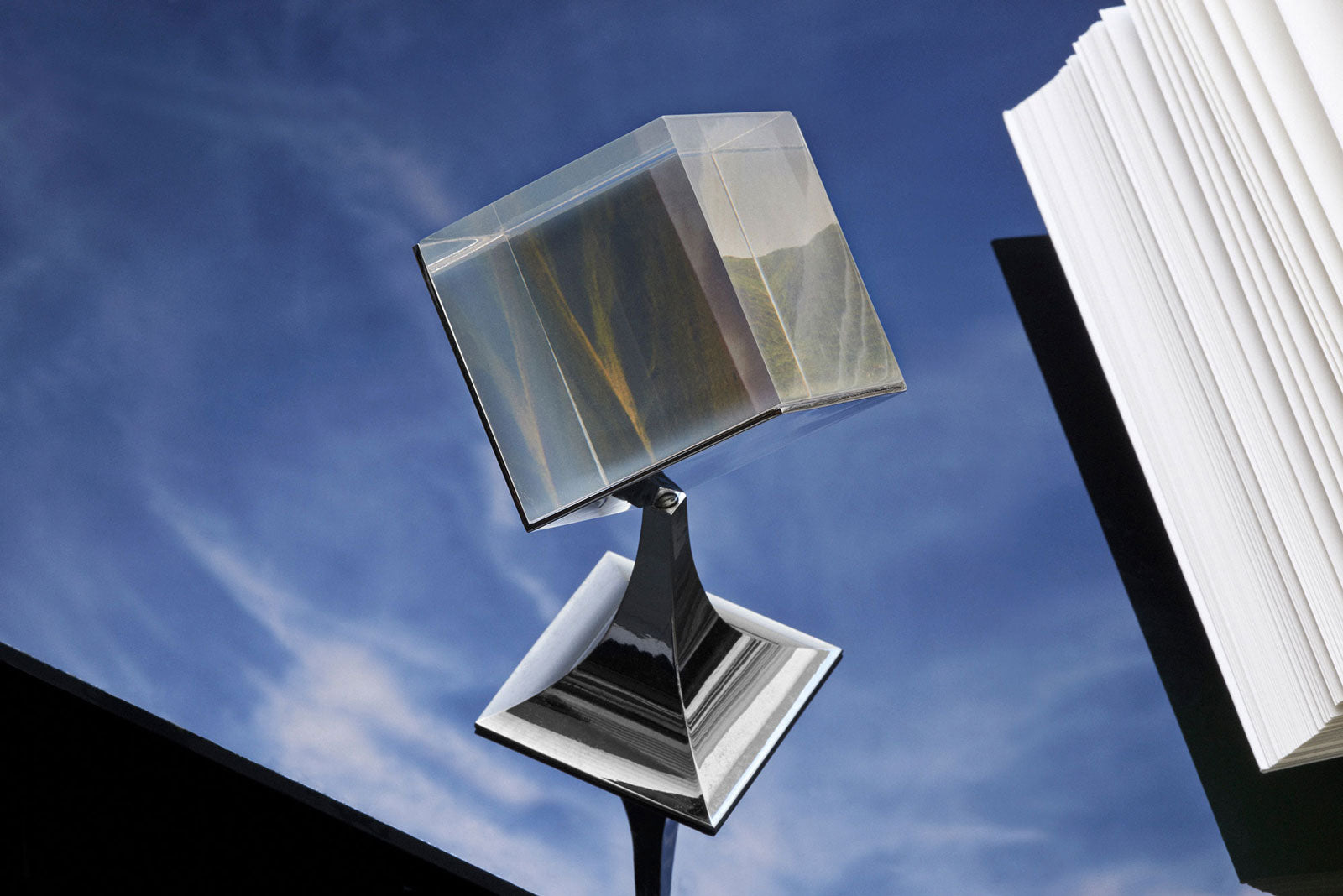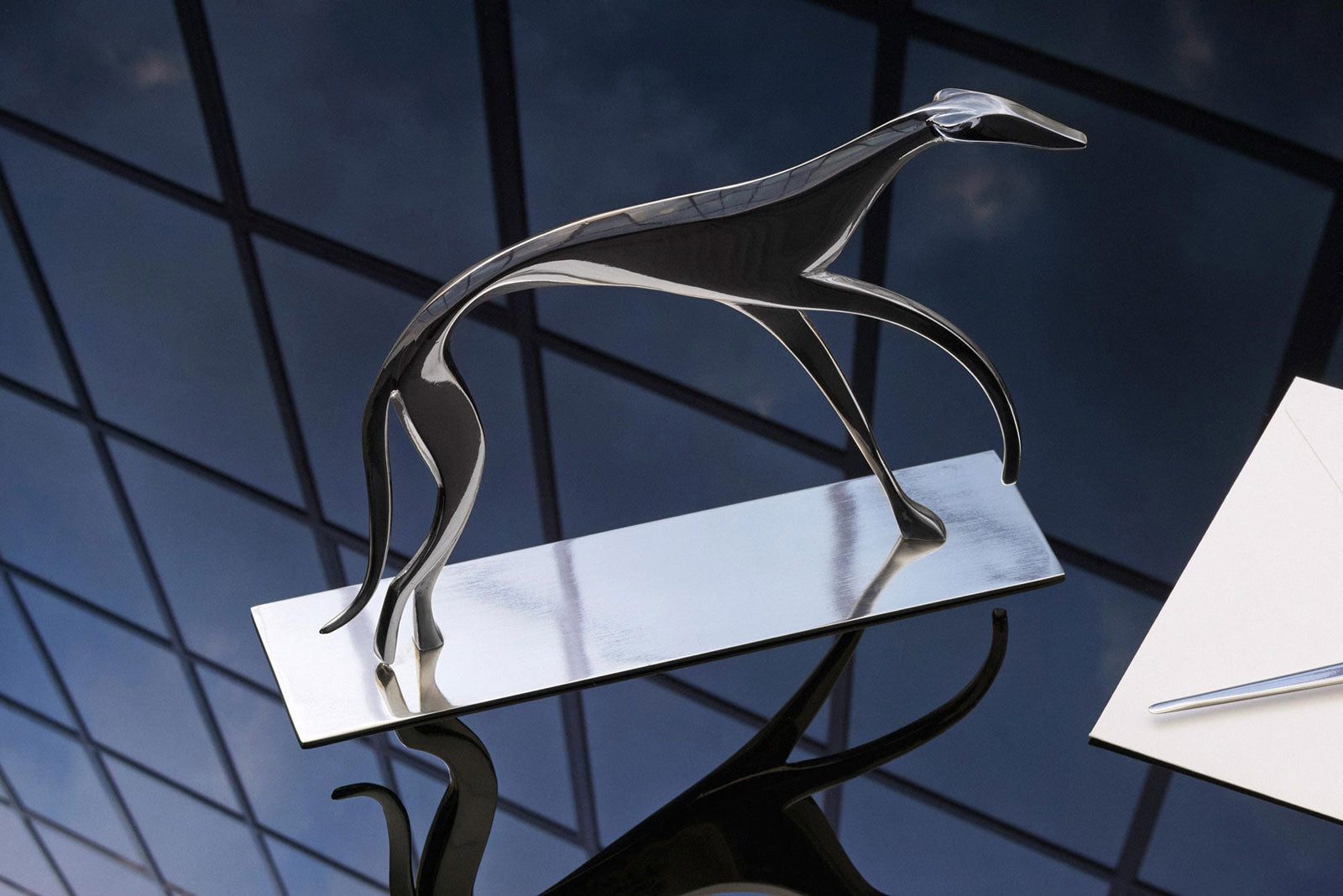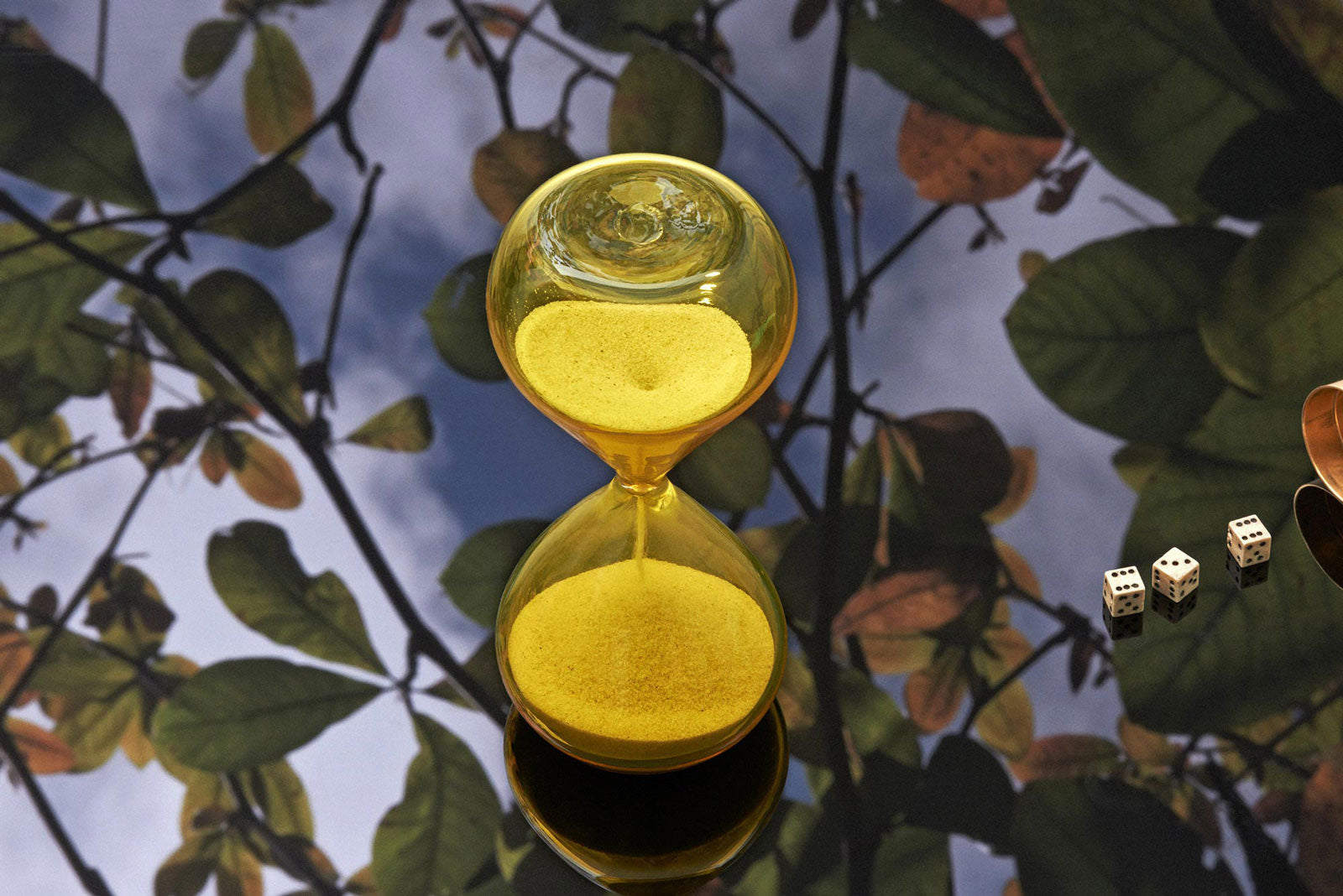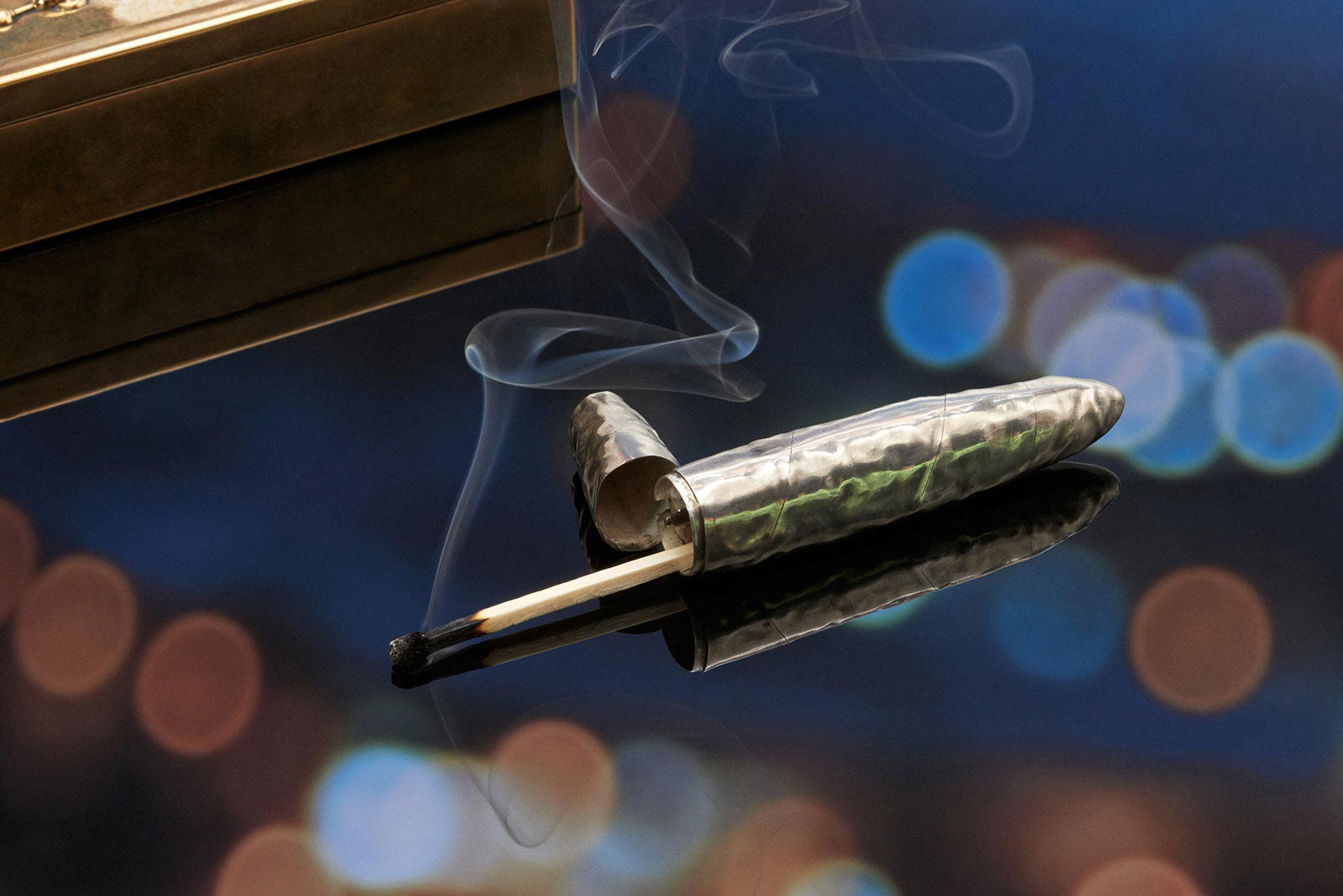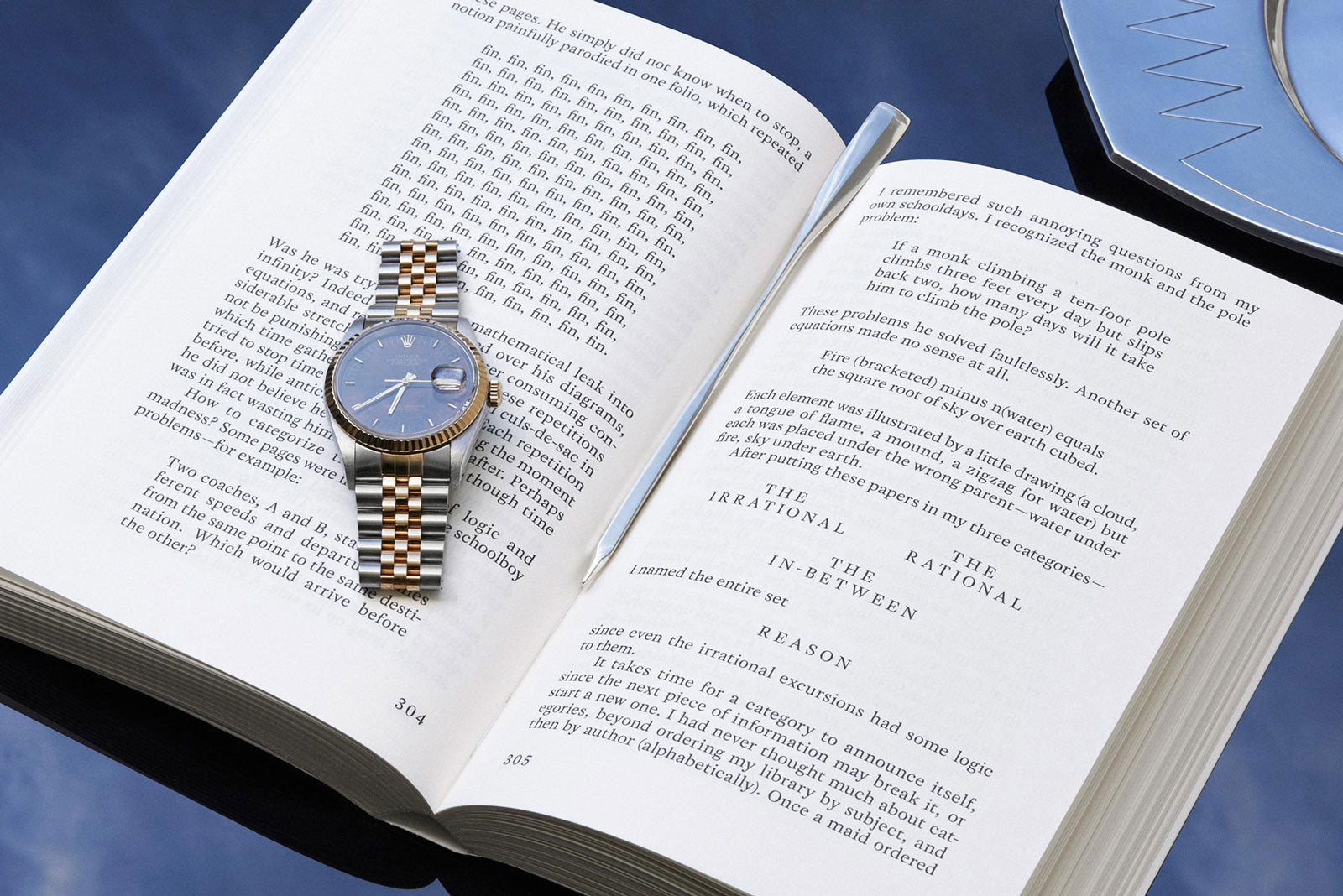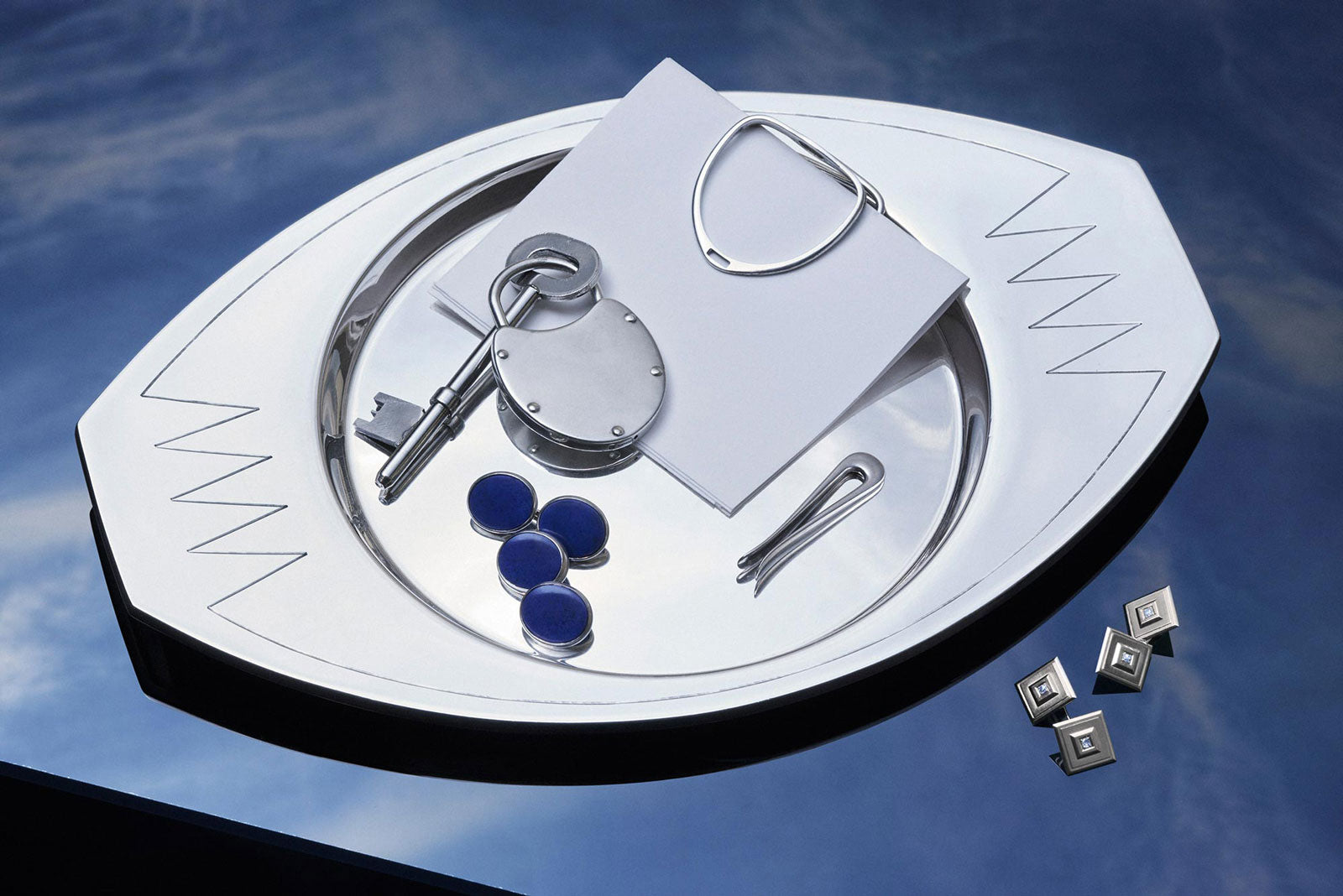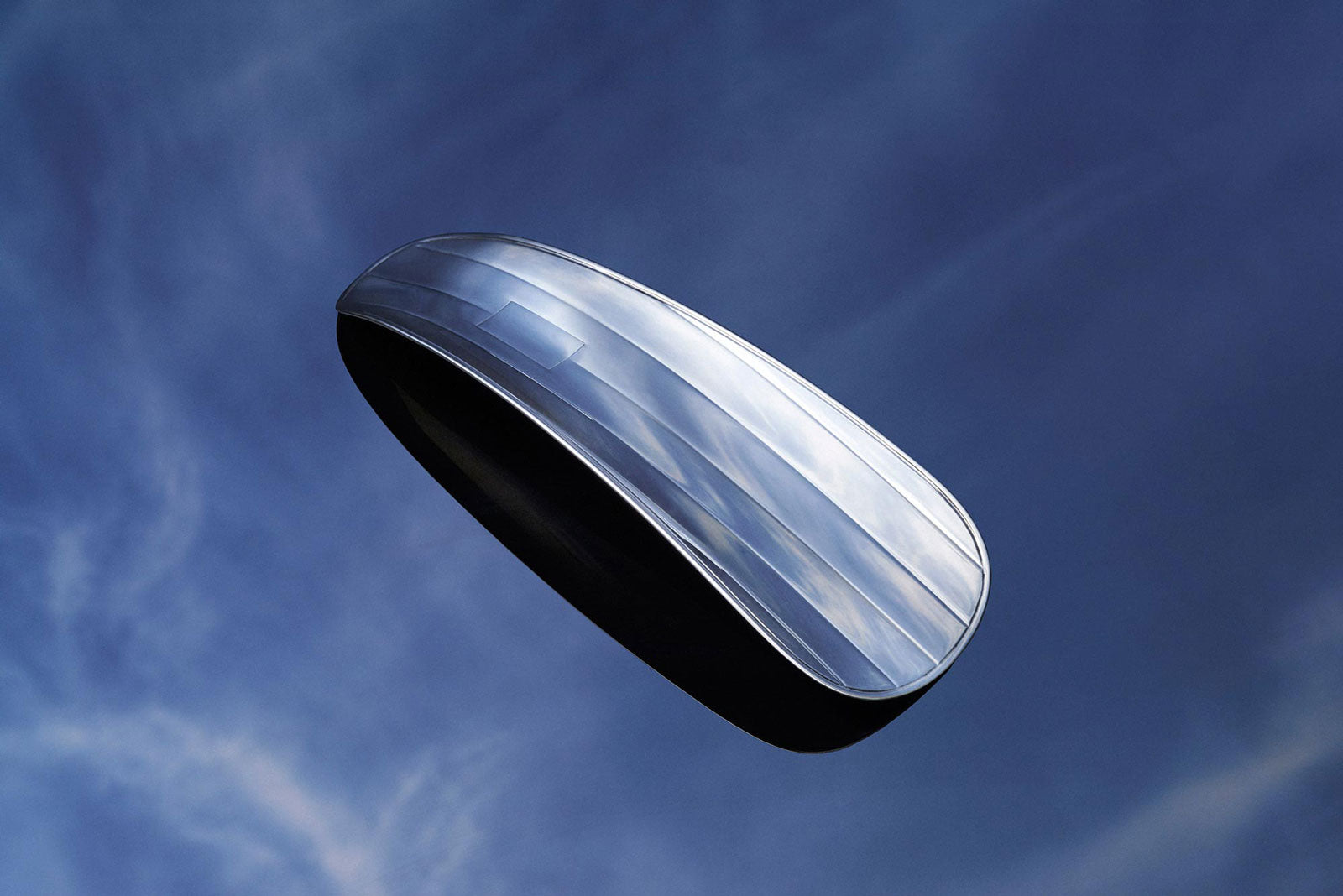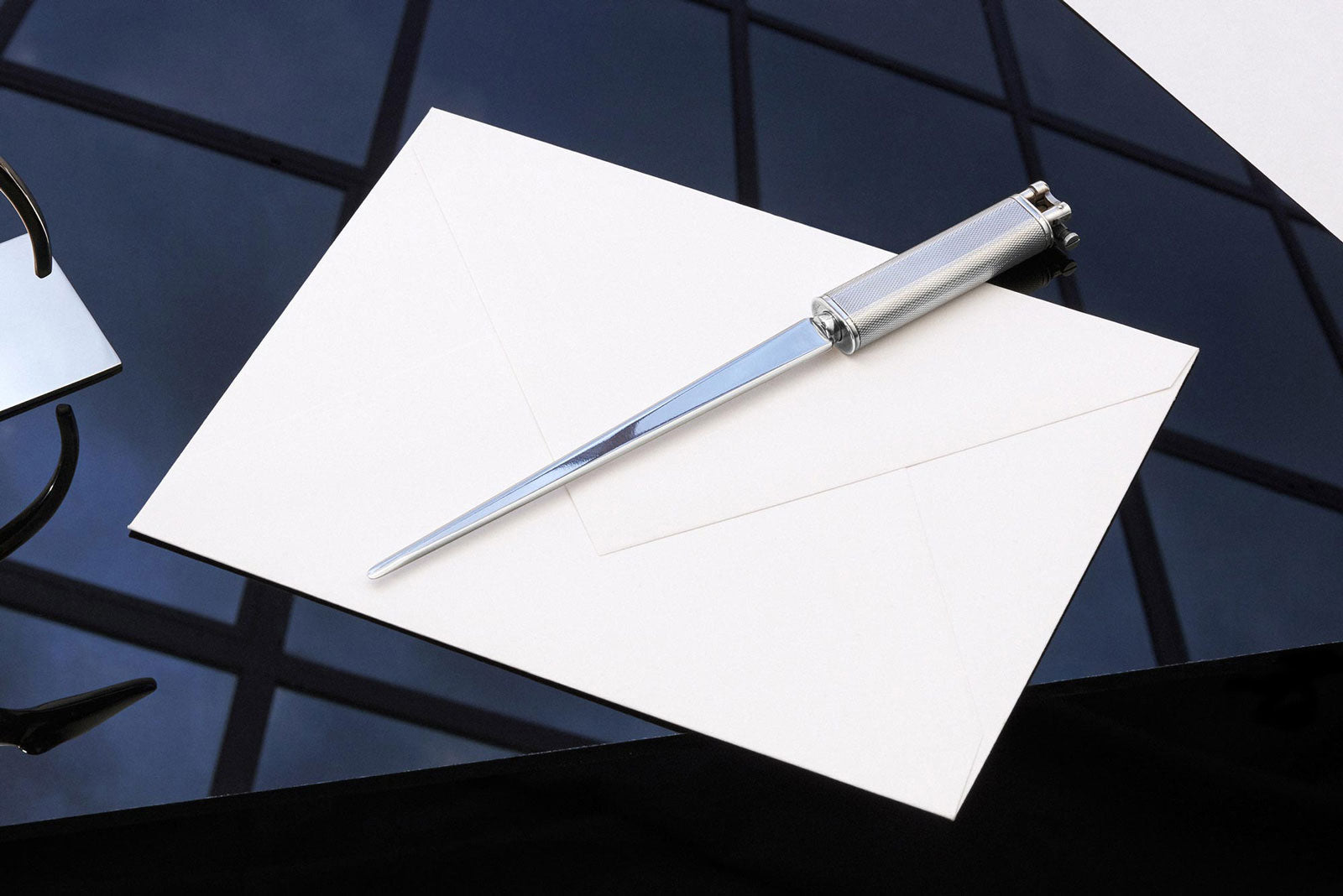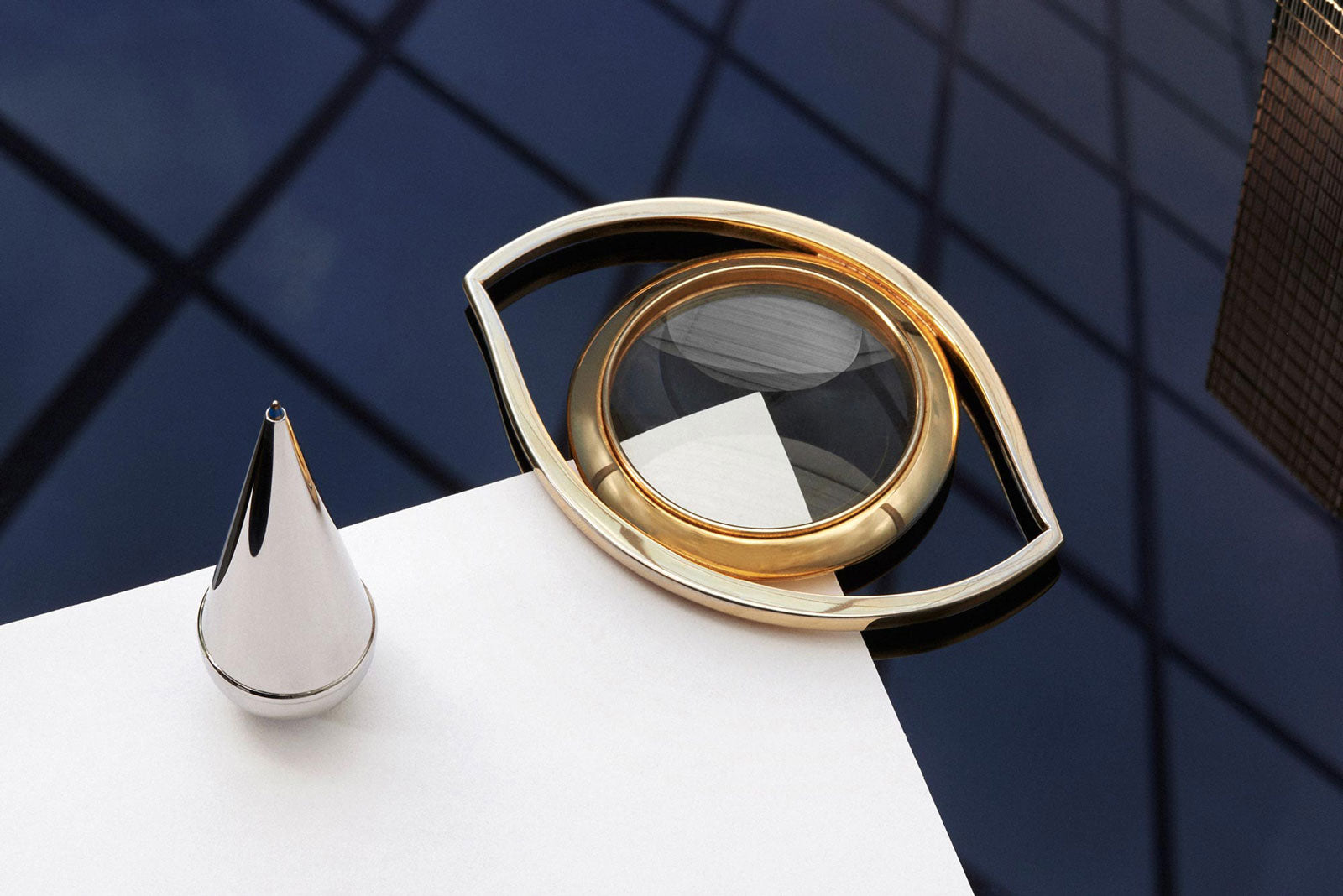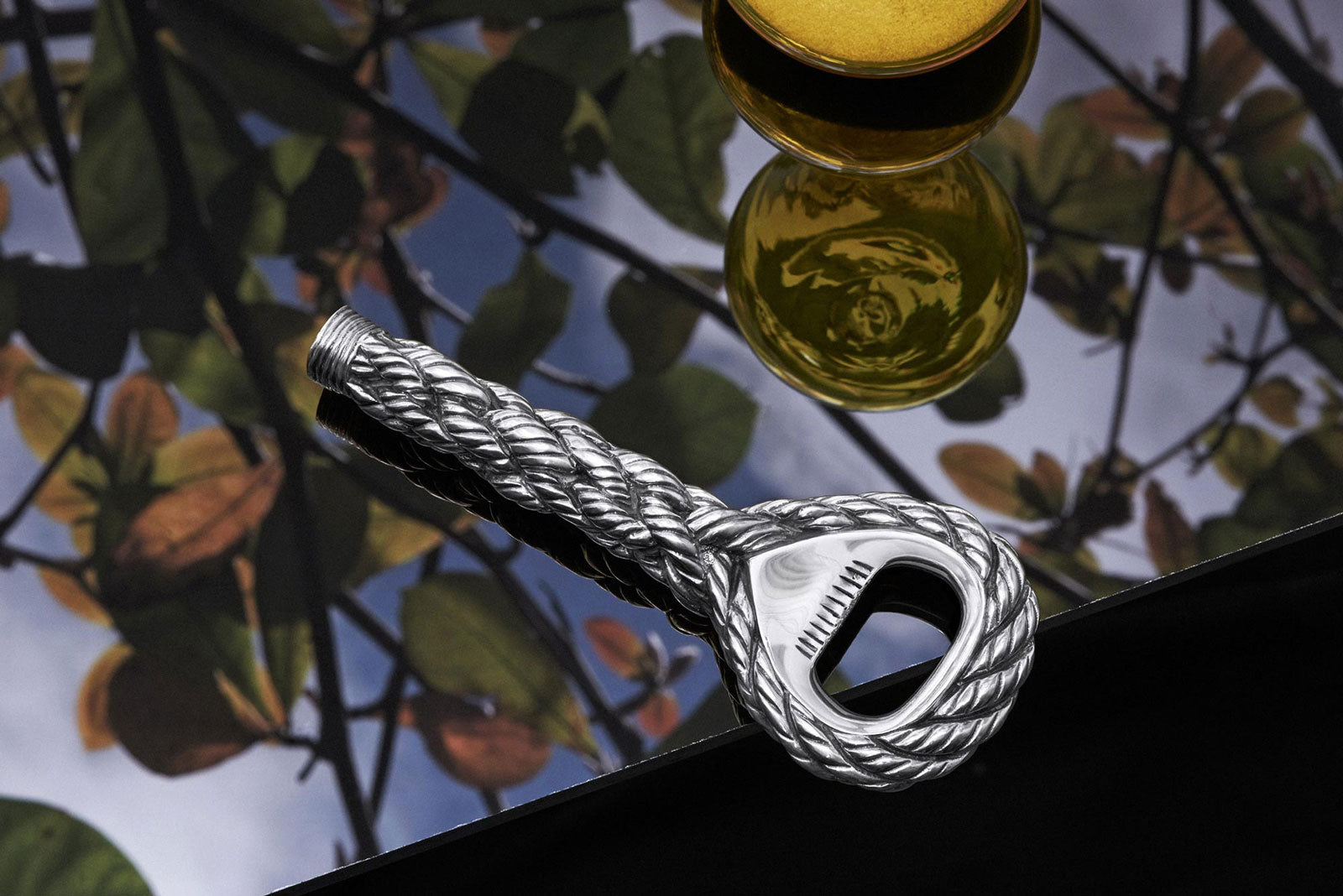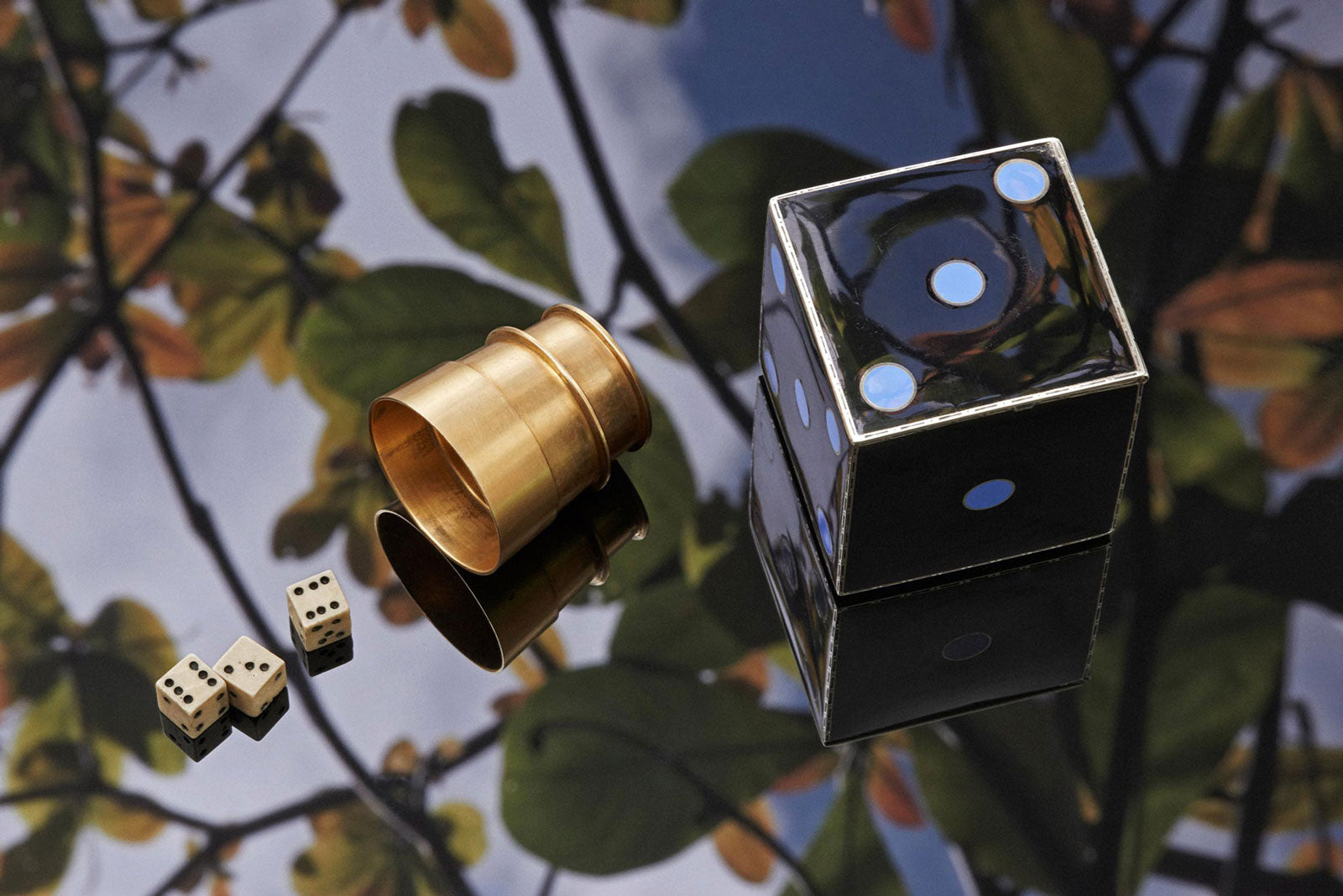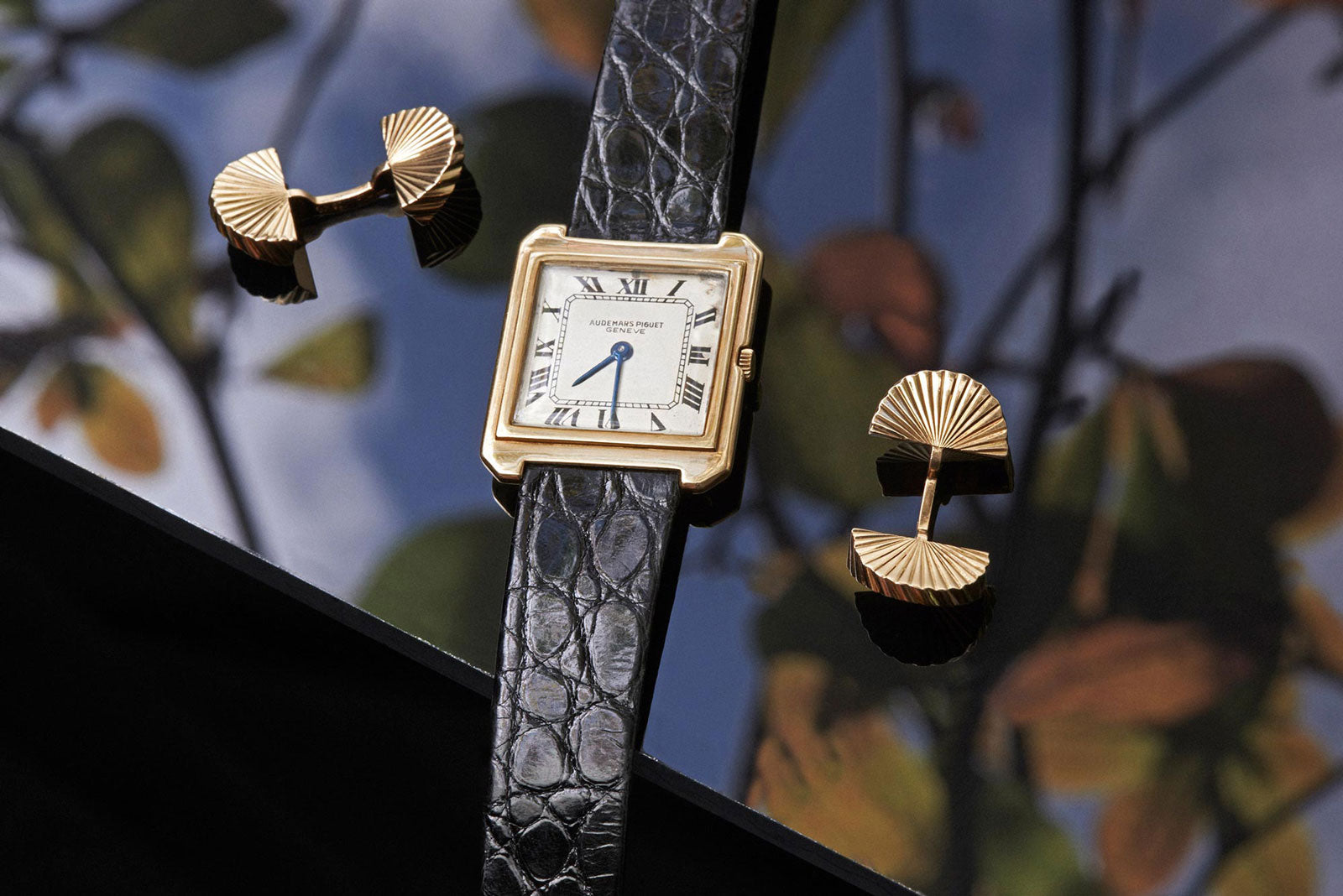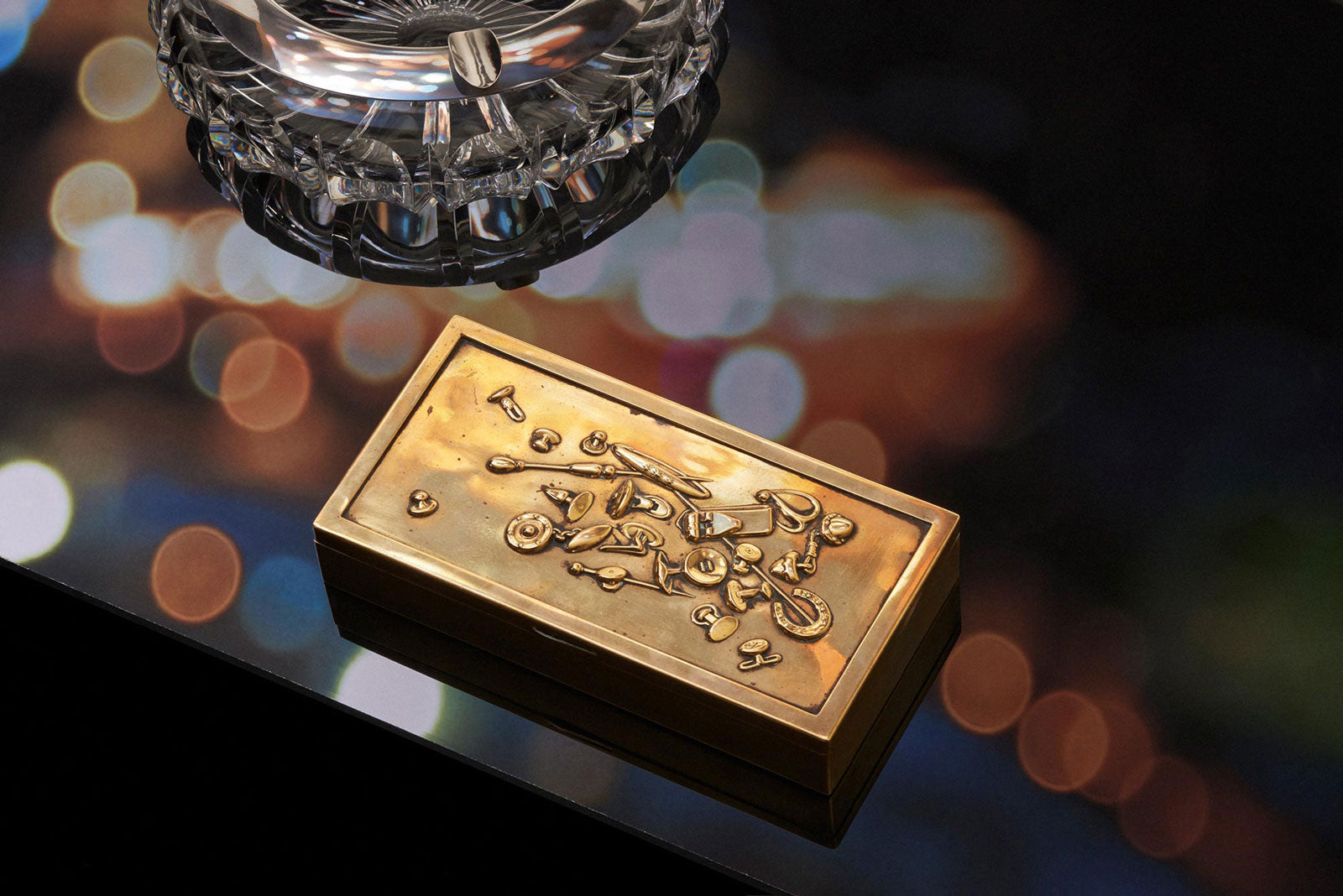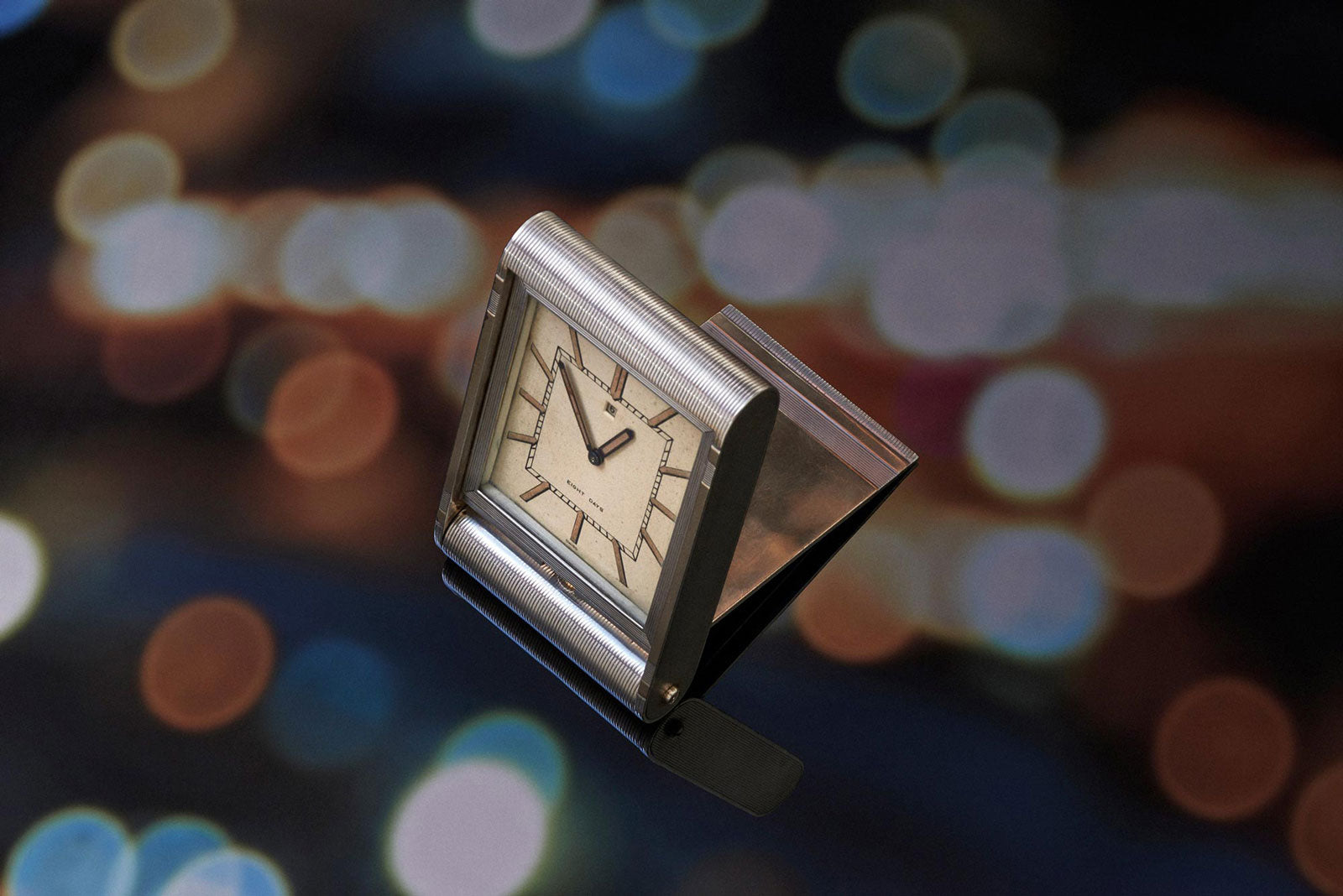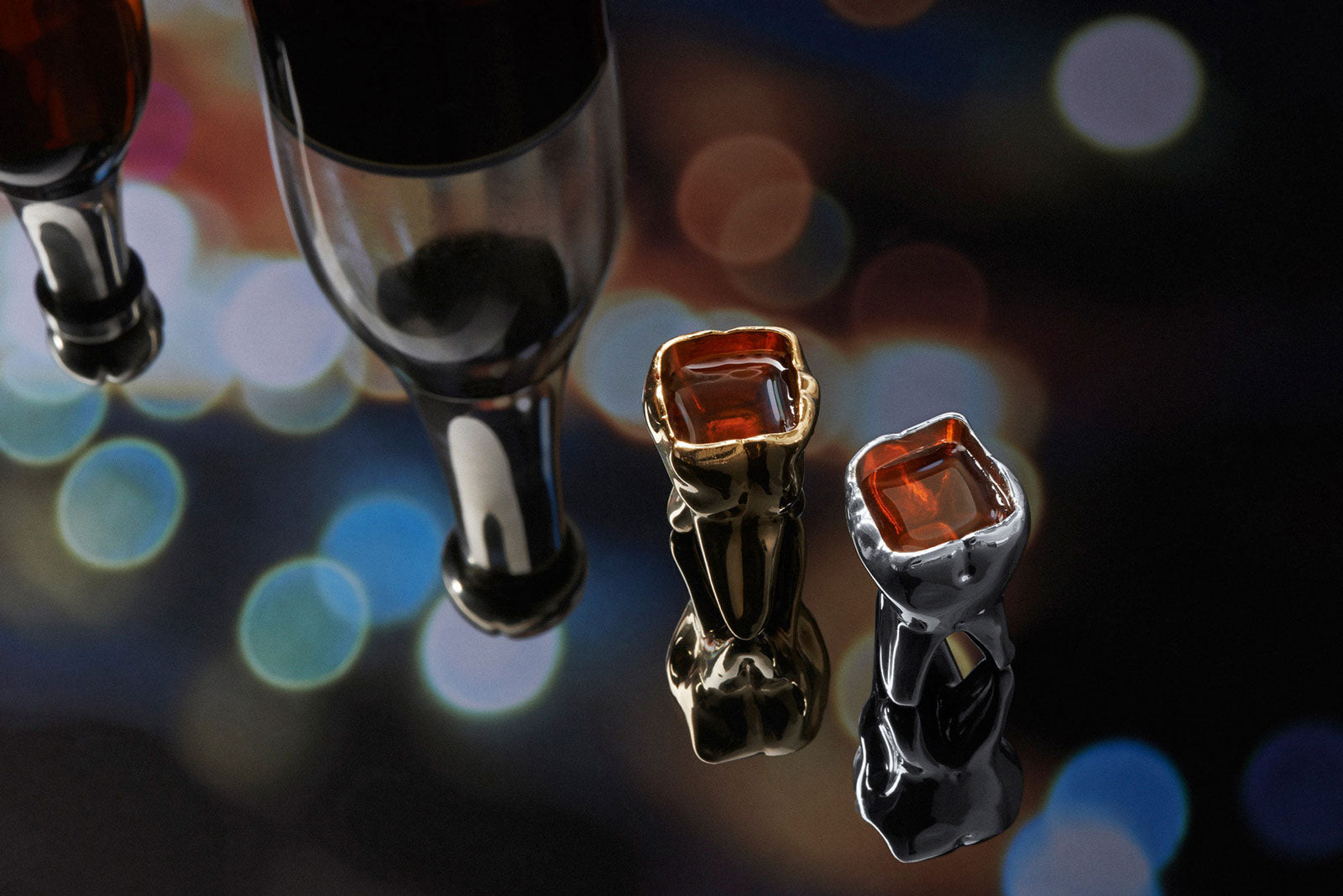A Jaeger LeCoultre Atmos Elysee Phase de Lune Temperature and Hygrometer clock with full box and papers, having been purchased at Tiffany in New York, with the retail stamp of the famous store. The Atmos is a stunning looking, and iconic time piece, but this example is not the standard "time only" version. This beautiful glossy white enamel dial has two further indicators at the two and ten o'clock position, along with the recognizable moon phase at the six o'clock position. The indicator at the ten o'clock position measures the temperature in degrees Fahrenheit. The indicator at the two o'clock position is a hyygrometer, an instrument used in meteorological science to measure the humidity, or amount of water vapour in the air.
Jaeger LeCoultre Atmos clocks, whose ingenious, near-perpetual mechanical movements are driven by air temperature changes, and have taken many forms which have been pushing the boundaries of horology and design since the 1930s. Jaeger-LeCoultre’s Atmos clocks, a mainstay of the Le Sentier-based company since the 1930s, are neither electronic nor traditionally mechanical, but something else entirely.
While the wristwatch remains Jaeger-LeCoultre’s primary vocation, the company continues to release, year after year, and often in limited numbers, new variations on the Atmos, an invention that traces its origins all the way back to 1928. Recent models have teamed Jaeger- LeCoultre’s seasoned design team with artists such as Apple Watch co-designer Marc Newson and have boasted collaborations with world-acclaimed luxury purveyors such as Hermès, Baccarat, and Alfred Dunhill and this example; from Tiffany & Co..
The principle behind the Atmos is simple in concept but complex in execution, especially considering the technical limitations of the era from which it arose. The clock literally runs on air, thanks to a gaseous mixture inside a hermetically sealed capsule, activating a membrane connected to the clock’s drive spring, which expands when the temperature rises and contracts when it falls. The up-and-down swelling of the membrane, like the bellows of an accordion, constantly winds the movement, and does so at a high level of efficiency: a temperature variation of a single degree (Celsius) in either direction is enough to provide the clock with a running autonomy of about two days. This is due to the extremely slow balance, which oscillates only twice per minute — compare this to the 480 beats per minute executed by a balance in a standard wristwatch caliber. The movement’s ingeniously designed gear trains require no oil, which also helps the Atmos to run accurately, efficiently and more or less perpetually (Jaeger-LeCoultre, and many who have written about the Atmos, describe the mechanism as “near-perpetual” or “virtually perpetual”). The Atmos was even environmentally friendly long before that was fashionable: Jaeger-LeCoultre is fond of pointing out that it would take 60 million Atmos clocks to equal the energy consumption of a single 15-watt electric lightbulb. The patent on the technology has long since expired, but Jaeger-LeCoultre is, to this day, the only watchmaking or clockmaking firm that utilizes it.
Developing this type of “perpetual motion” clock — one that would run and stay wound without any direct mechanical or electronic influences — was a lifelong obsession of Jean-Léon Reutter, a Swiss engineer, who in the 1920s brought his vision of such a device to life with a prototype whose movement reacted to the slightest variations in temperature and air pressure to constantly wind itself. Reutter called his invention the “Atmos,” because it was driven by atmospheric changes, equipping the first model with a glass capsule filled with a mixture of mercury, a substance he knew to be sensitive to such variations due to its use in thermometers, and ammonia. This glass tube was fitted into the metal bellows that powered the clock. Inside it, gas and liquid expanded and contracted with the minuscule temperature and pressure changes that occur commonly in a room, thus supplying power to constantly wind the mainspring. Reutter had the first working models of his clock manufactured by his employer, the French firm Compagnie Générale Radio (CGR).
It was this version of the Atmos (the so-called Atmos 1), so the story goes, that caught the eye of Jacques-David LeCoultre of Switzerland’s LeCoultre watch company (Edmund Jaeger and his Paris-based watch firm had yet to merge with LeCoultre and was in fact still a competitor at the time), who discovered it in a shop window and purchased it. This eventually led to LeCoultre purchasing the patent for the device from Reutter and ultimately utilizing the storied watchmaking talent at the company’s disposal to both perfect the Atmos from a technical standpoint and to use its marketing savvy to make sure that word of this amazing timekeeping innovation spread worldwide. Reutter, who was a trained engineer but not a watchmaker, had been struggling on both fronts.
The so-called Atmos 2, in which LeCoultre replaced the mercury in the capsule with a more stable, saturated gas called ethyl chloride, was released in 1936. These early models were plagued with technical issues, so full production did not begin until 1939. In the interim, specifically in 1937, Jaeger and LeCoultre merged their companies into the firm we know today, thus ensuring the Atmos clock would be known henceforth as a Jaeger-LeCoultre product. “It was LeCoultre who redeveloped the Atmos into what we know it as today,” says Stéphane Belmont, Jaeger-LeCoultre’s Director of Heritage & Rare Pieces. “He designed a device that was much more com- pact for integrating into a clock, one that worked with only the temperature differences rather than atmospheric pressure. He figured out how to perfectly seal the clock so it was totally airtight, which was necessary for the movement to function properly. Finally, LeCoultre had to fully redesign the movement itself and industrialize its production.”
It is a testament to the Atmos’s inventiveness, its design, and Jaeger-LeCoultre’s commitment to it that the clock has been in more or less continuous production since the first ones marketed to the public in the 1930s — somewhat surprisingly, considering the toll that the advent of quartz oscillators and electronics took on both the watch and clock industries. The mechanical watch, as we all know, came roaring back after the 1970s-’80s Quartz Crisis, but mechanical clocks never really recovered, remaining a very small, niche business. Part of the reason for the Atmos’s longevity could be the prestige it gained throughout much of the 20th century as an official gift of the Swiss government to American presidents and other heads of state, a distinction it held from the 1950s through the 1980s.
“The Atmos became known as the President’s Clock,” says Belmont. “When you see pictures of presidents in the Oval Office during that era, you can usually see an Atmos somewhere in the background. Whenever a President, a Pope, or a famous actor made an official visit to Switzerland, they would receive one because it was the symbol of Swiss clockmaking and savoir faire.”
The roster of VIPs who have received an Atmos reads like a Who’s Who of 20th century history: Jordan’s King Hussein, England’s Queen Elizabeth and Winston Churchill, France’s Charles de Gaulle, American presidents John F. Kennedy and Ronald Reagan, American actor Charlie Chaplin, and Pope John Paul II, to name a few. The Vatican, in Belmont’s estimation, most likely claims the largest collection of Atmos clocks in the world.
This fabulous example is complete with all original documentation, boxes and is in perfect condition. As mentioned prior, has, retailer details for Tiffany of New York. This model was made in the 1990's and is no longer in the line, making this a rare opportunity to own a very high quality and collectible example. This model features these unusual epee style hands with painted ends to make them stand out more against the white dial. These appear to only also be found on this model sold via Tiffany. A clock worthy of a fitting home.

